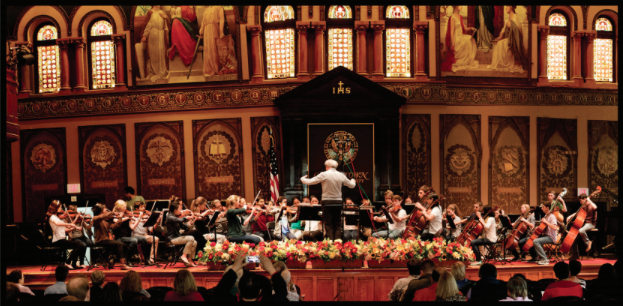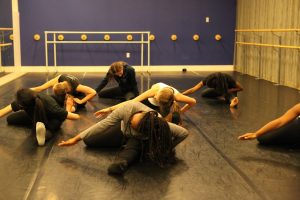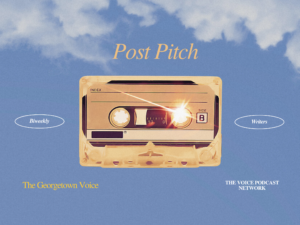While most students will be relaxing at home over spring break, twelve members of the Georgetown University Orchestra will be boarding a plane to Havana, Cuba. Only two years ago, such a trip would have sounded unfeasible as the U.S. government considered Cuba a state sponsor of terror. Now, members of the GU orchestra will spend the week with a youth orchestra, the Lyceum Mozartiano de La Habana, as a cultural exchange project between Americans and Cubans. In late April, ten members of the Lyceum will come to Georgetown for a similar experience.
As part of this cultural exchange, the students will leave on March 5 and spend the week in group rehearsals and private instruction to prepare for a performance on March 11. They will spend much of the week learning Cuban repertoire, but they have already started rehearsing Beethoven’s Symphony No. 4, which they will perform with the youth musicians at the Lyceum. The Cuban musicians at the Lyceum will then travel to the U.S. for a week in April, culminating in an April 22 performance with the Georgetown orchestra.
Although they have only had four weeks to prepare since the university approved the trip, many of the students are eager to participate. “It feels unreal because we only found out recently that it’s been approved,” Flautist Claire Abijay (COL ‘19) said.
After then-President Barack Obama’s decision to thaw US-Cuba relations, Angel Gil-Ordóñez, a professor in the department of performing arts and music director of the Georgetown University Orchestra, said he saw an opportunity given the new atmosphere of openness toward Cuba.
For Gil-Ordóñez, music has the potential to bridge political barriers. “I’m a true believer of the music as a means for mutual understanding,” he said.
He cites the West-Eastern Divan Orchestra, founded by Daniel Barenboim and Edward Said in 1999, as an example of this in practice. The orchestra, currently located in Seville, Spain, brings together Israeli and Palestinian musicians to promote peaceful coexistence.
“Individuals who had only interacted with each other through the prism of war found themselves living and working together as equals. As they listened to each other during rehearsals and discussions, they traversed deep political and ideological divides,” the orchestra’s website reads. “Though this experiment in coexistence was intended as a one-time event, it quickly evolved into a legendary orchestra.”
“Of course, with Cuba, we don’t have such a dramatic situation as you know, the Israeli-Palestinian, so this is much less conflict,” Gil-Ordóñez said. “But you know, that was…the inspiration behind what I wanted to do here.”

The Georgetown Orchestra plays in Gaston Hall./Photo courtesy of Angel Gil-Ordonez
Several students also said that they are interested in learning firsthand about a country that is often demonized in U.S. public discourse. “I’d love to get a real sense of who the people are and what they’re like rather than what we see the Cuban government as,” trombonist Patrick Mulcahey (COL ‘19) said.
The U.S. and Cuba have had a tumultuous relationship since the Cuban Revolution in 1959. After the Bay of Pigs invasion in 1961 and the Cuban Missile Crisis in 1962, U.S.-Cuban relations were particularly fraught, and Ronald Reagan put the country on a list of state sponsors of terrorism in 1982.
U.S.-Cuba relations improved only recently, during the final years of the Barack Obama’s second term. In May 2015, the Obama administration removed Cuba from the list of state sponsors of terror. In July, bilateral relations were re-established when the US Embassy opened in Havana and the Cuban Embassy opened in D.C. John Kerry visited the country in August, becoming the first U.S. Secretary of State to do so in 70 years.
Obama loosened financial and travel regulations with Cuba before his visit in March 2016, when he became the first president to travel to the country since Calvin Coolidge in 1926. Later that year, commercial airlines began offering flights to Cuba.
Because of financial support from the University Office of the President and the Georgetown University Latin America Initiative, the Georgetown students will not have to pay for their commercial flights, and the program is free for all participants. The Georgetown students will only have to pay for their meals, Gil-Ordóñez added.
Bringing the Cuban musicians to Georgetown, however, has proven to be somewhat more difficult financially. The university will provide their housing and meals, but the Georgetown students plan on fundraising to cover incidental costs after spring break.
“What we’ve been working on is there will be certain stores around the Georgetown area that will take a plot of time out of their day where about ten percent I think will go towards our missions,” said Roman Kosarzycki (COL ‘19), a violinist who is part of the orchestra’s three-member Cuba Committee tasked with facilitating the program.
Because of financial restrictions, the orchestra had enough funding to bring only 12 students to Cuba. Upperclassmen were given priority, but since some are unable to participate because of other commitments, sophomores are able to attend.
Gil-Ordóñez hopes that the program will be ongoing, so he chose to give priority to juniors and seniors to maximize the number of musicians who can attend over the course of their Georgetown career. Though he aims for the program to be at least bi-annual, Gil-Ordóñez hopes to make it an annual event.
An annual trip would be a big change for an orchestra that has never toured before. Gil-Ordóñez has wanted to travel with orchestra, but the busy schedules of most Georgetown students have kept them stateside.
“We have been thinking of this for a long time,” he said. “But you know how busy you are here at Georgetown, and you are all so bright and you have so many different activities that to put together 50 people in order to do something is, to me, is a nightmare”
He hopes that both groups of students will learn musically and culturally from this experience. According to Gil-Ordóñez, there are no music majors in Georgetown’s orchestra, so the Georgetown students have much to gain from their Cuban counterparts, who are training to become professional musicians.
“There is an extraordinary energy in every rehearsal and there is a phenomenal atmosphere so in that sense, I think that this travel will somehow enhance that a little more,” Gil-Ordóñez said. “For the Cuban students, they are going to be professional musicians so they are musically trained so to relate to our students and to see that, for them, music is so important even though it’s not their main activity, I think is going to be a great experience for the Cubans, too.”





